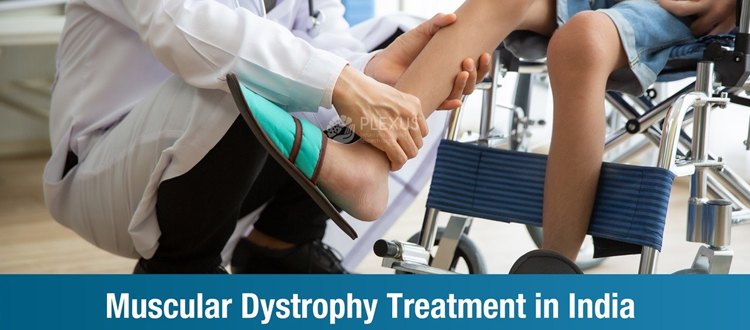Muscular Dystrophy (MD) in India poses a significant challenge, affecting thousands of individuals. Primarily genetic, MD leads to progressive muscle weakening and degeneration.
A collection of hereditary diseases known as muscular dystrophy (MD) are typified by increasing weakening and muscle degradation. The condition primarily arises from mutations in genes responsible for producing proteins crucial for maintaining muscle structure and function. Various types of MD exist, each with distinct genetic causes and clinical manifestations.
One prominent form is Duchenne Muscular Dystrophy (DMD), affecting primarily males due to mutations in the DMD gene, leading to the absence of dystrophin- a vital protein for muscle integrity.
Becker Muscular Dystrophy (BMD) is related to the same gene but results in a partial deficiency of dystrophin, generally causing milder symptoms.
Myotonic Dystrophy comprises two types, DM1 and DM2, caused by expansions of repeated DNA sequences. These forms affected not only muscles but also other organs, leading to symptoms like muscle stiffness, weakness, and myotonia (prolonged muscle contractions).
Facioscapulohumeral Muscular Dystrophy (FSHD) is characterized by weakness in the face, shoulder blades, and upper arms, linked to a deletion on chromosomes 4 in the DUX4 gene.
Limb-Griddle Muscular Dystrophy (EDMD) affects skeletal and cardiac muscles, often causing joint contractures. Mutations affecting proteins crucial for muscle function. Symptoms include progressive muscle weakness in the hips and shoulders.
Common symptoms across MD types include muscles weakness, wasting, difficulty in motor skills, contractures, fatigue, and in certain cases, respiratory or cardiac complications. Diagnosis involves genetic testing, muscle biopsies, and clinical assessments. Although there is no cure, supportive treatments like physical therapy, assistive devices, and respiratory support aim to enhance quality of life.
Stem Cell Treatment for Muscular Dystrophy: –
In India, companies like “Stem cell cure India” may be involved in providing stem cell therapies. “Stem cell treatment for Muscular Dystrophy (MD)” holds promise in exploring avenues for potential therapeutic interventions. Stem cells have a unique ability to differentiate into various cell types, offering the potential therapeutic interventions. Stem cells have the unique ability to differentiate into various cell types, offering the potential to regenerate damaged or degenerate muscle tissue, offering the potential to regenerate damaged or degenerate tissue.
The unique regenerative properties of stem cells, provide several advantages like Stem cells have capacity to differentiate into muscle cells, potentially replacing damaged or degenerated tissue. Certain stem cells, like Mesenchymal Stem Cells (MSCs), exhibit anti-inflammatory properties, which may reduce inflammation associated with MD, slowing disease progression.
Stem cells can contribute to the repair of damaged muscle fibers and support overall tissue healing. Successful integration of stem cell-derived muscle cells can enhance muscle strength and function, positivity impacting mobility and motor skills. Stem cell therapies ma address underlying genetic or cellular abnormalities in MD, offering more targeted and holistic approach to treatment.
In Conclusion, “Stem cell treatment hold promise for muscular disease” by offering potential muscle regeneration and disease modification. Companies like “Stem cell cure India” contribute to this field, driving innovative solutions and fostering hope for improved outcomes in the management of Muscular Dystrophy through stem cell interventions.

